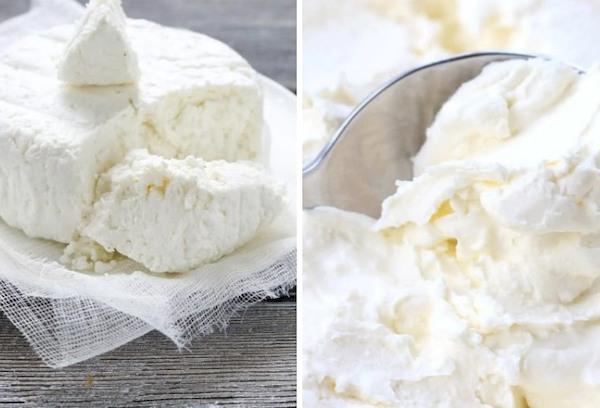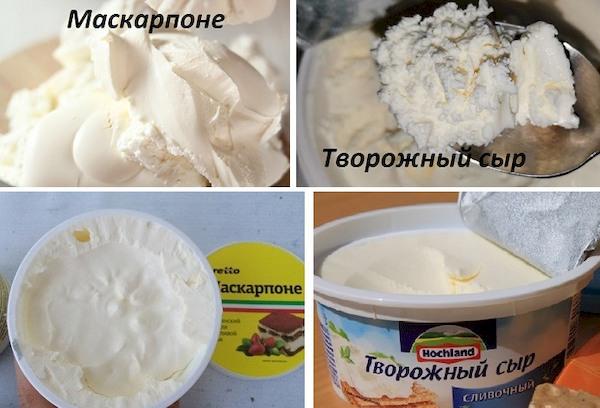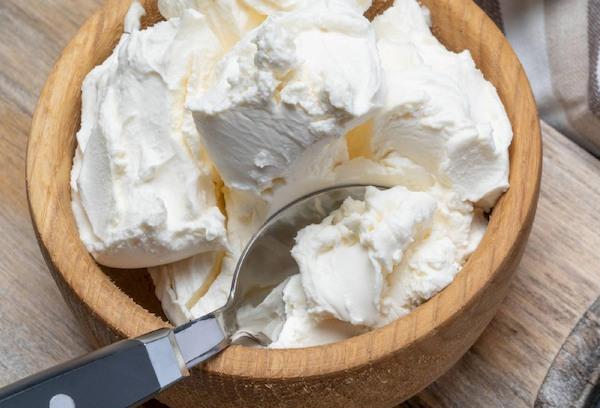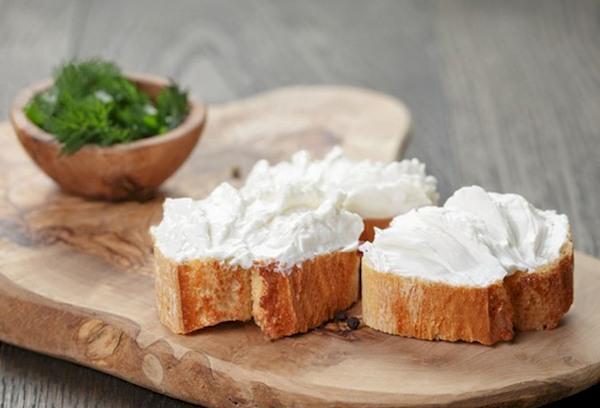What is the difference between Mascarpone and cream cheese?
It is important to understand the difference between Mascarpone and cottage cheese in order to deliciously prepare cheesecakes, snacks and Tiramisu. Sweetish Italian Mascarpone is the leader in fat content among soft cheeses. It is milky, tender, creamy and best suited for airy desserts. Curd cheese is characterized by fermented milk notes and a paste consistency. It makes ideal snacks, pies, cheesecakes and cheesecakes.

How to distinguish Mascarpone cheese from cottage cheese?
There are several ways to distinguish one product from another:
- Taste. Mascarpone is milky, similar to cream, and curd cheeses resemble cottage cheese.
- By consistency. Curd cheese has a denser consistency. Mascarpone is airier.
- According to the information on the packaging. Mascarpone cheese is called that way - M If you pay attention to the composition, cream will come first. In curd cheeses, the main ingredient is cottage cheese.
To better understand the differences between cream cheese and Mascarpone, let’s compare them in the table:
| Mascarpone | Cottage cheese | |
| Compound | cream;
with or without added milk |
cottage cheese (milk, lactic acid bacteria, sourdough);
animal rennet |
| Consistency | creamy, homogeneous | plastic, soft, delicate;
spreading into a dense homogeneous layer; there may be a small amount of serum on the surface |
| Color | from white to beige | white or light cream |
| Taste | pronounced creamy, milky, sweetish | fermented milk;
often salty |
| Kinds | without food additives;
with olives or black olives; with fresh herbs; with spicy and aromatic mixtures; with nutmeg (other nuts); with pepper; with sesame; and etc. |
heat treated;
whipped; aerated; sweet; with food flavoring additives; enriched; creamy |
| Calorie content | 400-450 kcal | 200-300 kcal |
| Fat content | 75-80% (in dry matter) | up to 65% (in dry matter) |
| Application | dessert component;
ice cream; as an independent dessert (served with fruits, berries, candied fruits, nuts, honey, cookies); Sformato, Tiramisu and other Italian dishes; cream and butter substitute |
spread for sandwiches and snacks;
sweet and savory pies; cookie; syrniki; preparing creams for filling eclairs, profiteroles and cakes; cheesecakes |
| Benefit | contains a small amount of protein (3-6 g);
rich in saturated and monounsaturated fats; good for healthy skin, hair, endocrine system (up to 50 g per day) |
contains about 7-10 g of protein, fatty acids, lactic acid bacteria, calcium, phosphorus, B vitamins;
good for bones and teeth, muscle, nervous and digestive systems |
Difference in photo:
What is Mascarpone?
Mascarpone cheese belongs to the category of fresh spreadable cheeses with minimal aging. He was “born” in northern Italy, presumably at the end of the 16th century. In local parlance, mascarpia means cream.
The uniqueness of Mascarpone lies in its combination of high fat content, high calorie content and tenderness.
The product seems very tasty. You can eat a lot of it and not notice it. In order not to gain excess weight, it is important to stop in time.
Cooking features. To obtain the product, cream with a fat content of 25-35% is fermented with tartaric acid (or white wine vinegar, at home - citric acid and lemon juice). They are then cooled and kept in linen bags to separate the whey.
After 12-18 hours, only a creamy mass remains with a pleasant sweet milky aroma and taste. It is very light, airy, does not separate or fall off when whipped, and retains its shape when baked. Cooks make numerous airy creams for cakes and pastries based on cheese.
The most famous Italian dessert, Tiramisu, is prepared with Mascarpone.
It is also one of the few cheeses that are prepared without the use of rennet. It is suitable for vegetarians.
What is cottage cheese?
For many centuries, cheese in Rus' was called ordinary cottage cheese, and dishes that were prepared from it were called cheese (a striking example is cheesecakes). Today, the names mean completely different products, and curd cheese is distinguished separately.
Cottage cheese tastes like cottage cheese, but its consistency is closer to soft cheese.
Cooking specifics: Milk and dairy products are normalized to the desired fat content. Then the starter and rennet are added. After ripening, a curd clot is formed. It is salted, cooled and packaged for sale.
Often, to reduce the sour milk taste, the product is prepared with the addition of cream or butter. It turns out to be curd cream cheese.
Question answer
How is it different from cream cheese?
Mascarpone is similar to cream cheese in taste, color and consistency, but has a higher fat content. It is richer and melts in your mouth. Curd cheese differs from cream cheese in its fermented milk taste.
How to replace Mascarpone?
Cream, Philadelphia, ricotta (depending on the recipe).
Mascarpone is considered a very special type of soft cheese. Even an inexperienced person will notice the difference with curd cheeses. It is sweetish, fatty, reminiscent of cream, without sourness. Its main use is for sweet dishes. Italians often prepare Tiramisu with it and use it in everyday life instead of cream and butter. Curd cheese is considered more suitable for snacks. The best combination is with avocado, red fish, fresh herbs, toast and crackers.



